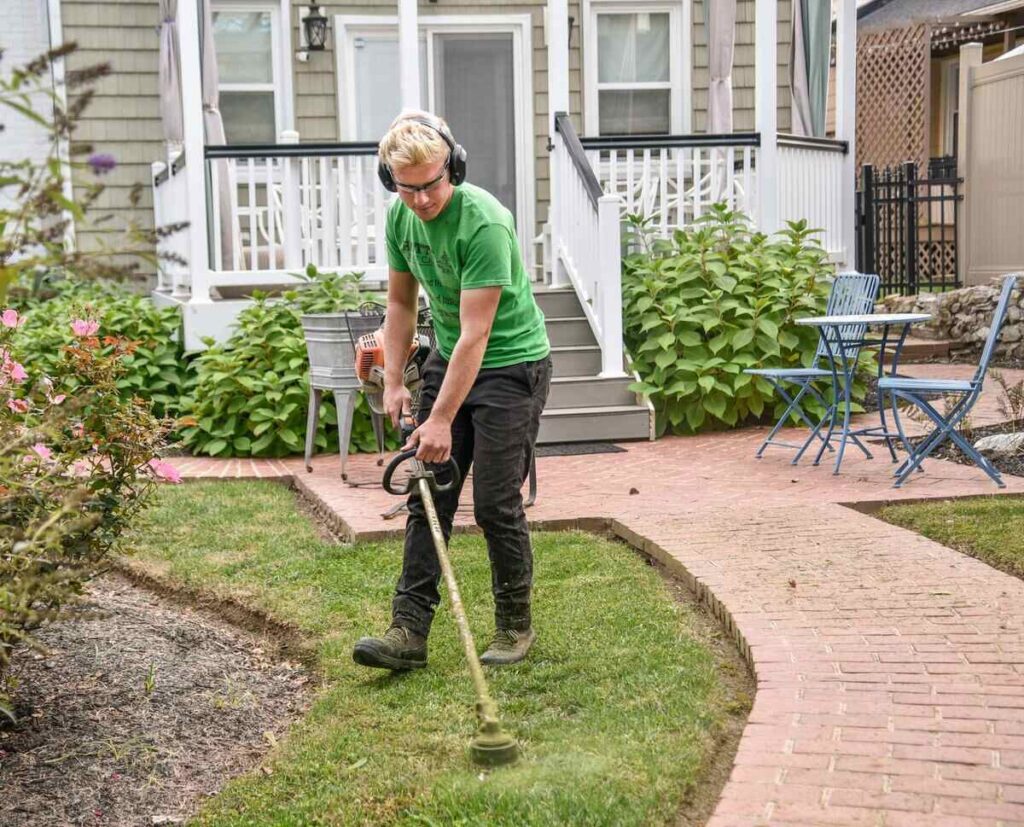You’re ready to step up your lawn care game and precision spreading is the way to do it. Don’t let uneven grass growth ruin your yard’s appeal. With the right spreader, you’ll master the even distribution of seeds and fertilizer.
But how do you choose the perfect tool? We’ve got you covered. Let’s dive into the world of precision spreading and transform your lawn into the neighborhood’s envy.
Ready? Let’s get spreading!
Understanding Precision Spreading
Before you even start, it’s essential to understand that precision spreading, at its core, is all about distributing lawn care products evenly and accurately over your yard. It’s not just haphazardly tossing around grass seed or fertilizer (make sure to compost your waste if you want to be eco-friendly!).
Precision spreading requires you to use a spreader (here’s a Scotts spreader settings chart if you need one), a tool designed to scatter products in a controlled, uniform manner.
But why is this important, you ask? Well, it’s simple. Uneven application can lead to patchy growth or, worse, damage to your lawn. Too much product in one area can burn your grass, while too little won’t give the desired results.
By mastering precision spreading, you’re ensuring your lawn gets the exact care it needs, leading to a healthier, greener yard.
Types of Lawn Spreaders
Now that you’ve got a grip on the importance of precision spreading, let’s delve into the various types of lawn spreaders you can use to achieve that coveted even distribution. Different tasks call for different tools, and lawn spreaders are no exception.
- Drop Spreaders: These provide the most precision, making them perfect for smaller, well-defined areas.
- Broadcast Spreaders: Ideal for large open spaces, they distribute seeds or fertilizer in a wide pattern.
- Handheld Spreaders: Your go-to for tiny spaces or reseeding patches. Compact and easy to use.
- Tow-Behind Spreaders: Designed for large lawns or fields, these heavy-duty heroes attach to a tractor or ATV.
Choosing Your Ideal Spreader
Choosing your ideal spreader involves considering your lawn’s size, your budget, and the specific tasks you’ll be performing.
- For smaller lawns, a handheld or drop spreader might be perfect for you. They’re more affordable and easier to store.
- But if you’ve got a larger space, a broadcast or rotary spreader would be more efficient. They’re pricier but worth the investment for big yards.
- Consider the tasks, too. Applying seed or fertilizer? A broadcast spreader’s your best bet. If you’re dealing with pest control, a drop spreader offers more precision.
- Don’t forget to check product reviews and warranty options before purchasing.

Tips For Effective Spreading
Once you’ve found the perfect spreader for your lawn, it’s time to learn how to use it effectively to get the best results. Precision spreading isn’t just about the tool, but also how you use it.
To make your spreading efforts worthwhile, consider these tips:
- Know your spreader: Understand its unique features and how best to use them. You’ll feel empowered and in control.
- Use the right product: Not all fertilizers or seeds are the same. Choose wisely, based on your lawn’s needs. You’ll feel satisfied knowing you’re nurturing your lawn properly.
- Spread evenly: Uneven application can lead to patchy growth. You’ll feel pride when you see your lush, evenly green lawn.
- Clean your spreader: Always clean it after use. This prevents clogging and prolongs the spreader’s life. You’ll feel responsible and prepared for the next spreading task.
Maintenance and Care for Spreaders
Maintaining your spreader’s longevity involves regular care and attention to keep it in prime condition. Just like any other tool, it’s critical you clean it after each use. Rinse it thoroughly to remove any lingering fertilizer or seed. This prevents corrosion and keeps its moving parts functioning smoothly.
It’s also essential to keep it dry. Water is a spreader’s enemy, causing rust and mechanical failures. Store it in a dry, sheltered area to protect it from the elements.
Regularly inspect your spreader for any worn-out parts. Replacing them promptly maintains its effectiveness and extends its lifespan.
With these simple yet crucial steps, you’ll ensure your spreader stays in top shape, ready to give your lawn the care it needs.
Conclusion
So, you’ve got the lowdown on precision spreading. Whether it’s broadcast, drop, or handheld, the ideal spreader is out there, tailored for your lawn’s needs.
Now armed with these tips and maintenance know-how, your lawn care game is set to level up. Remember, the right spreader, used effectively, can make your lawn the envy of the neighborhood.
It’s time to take control and give your lawn the care it deserves.






